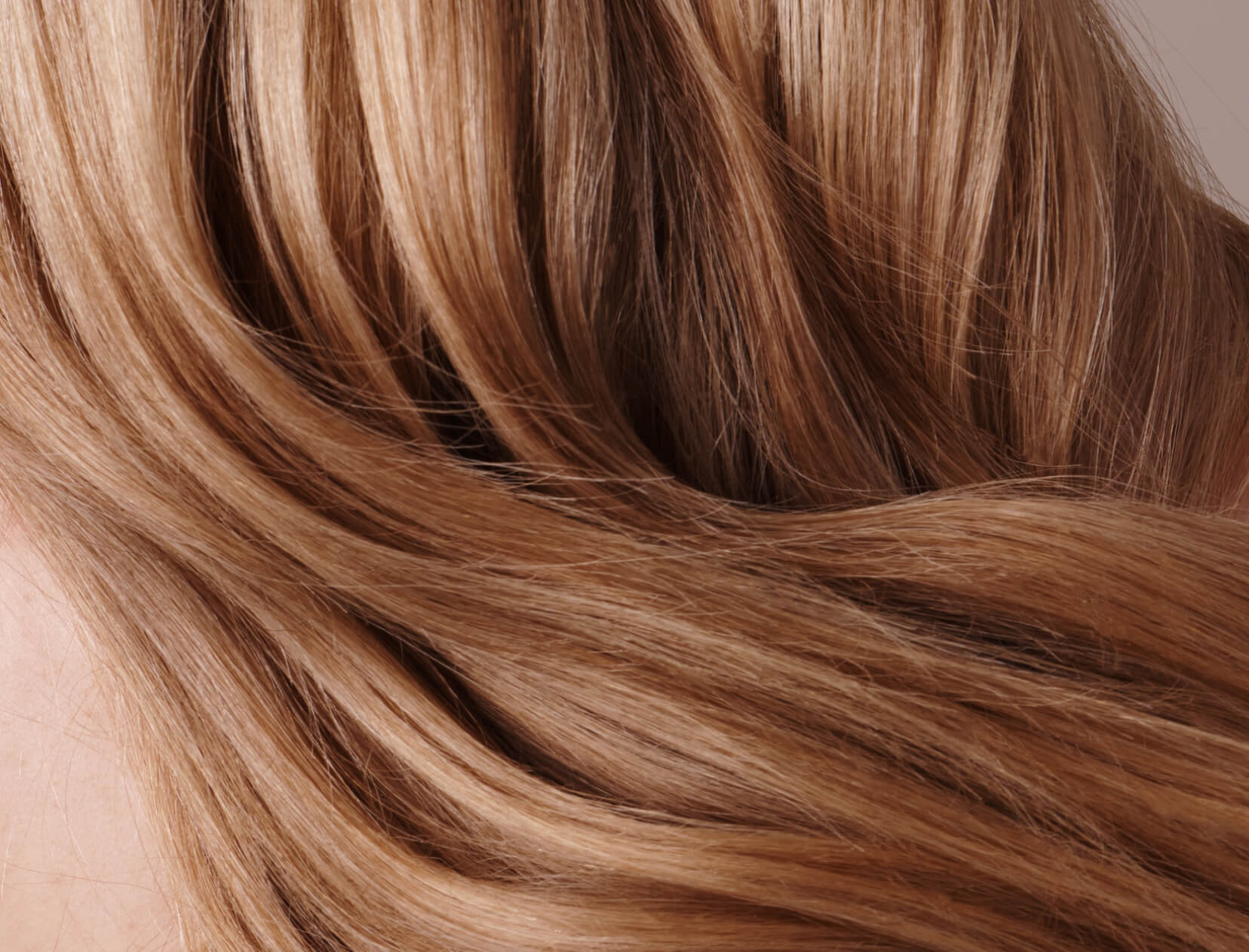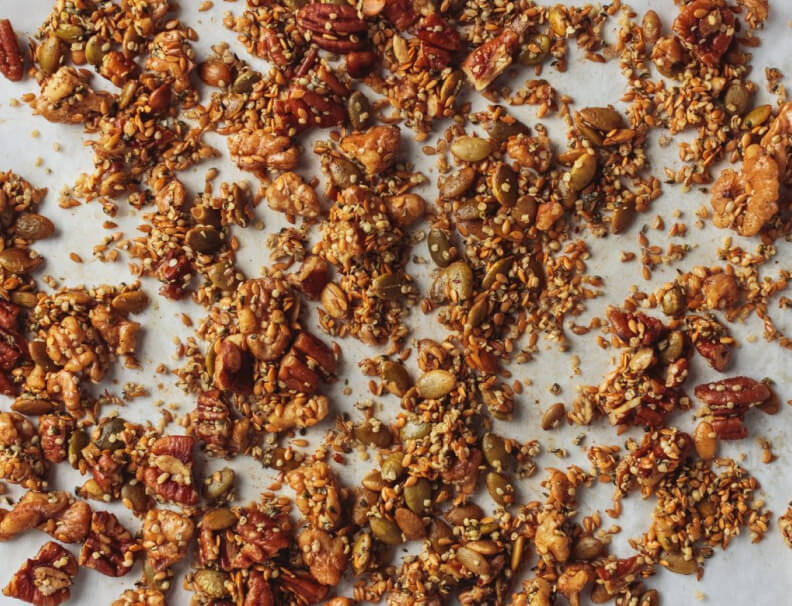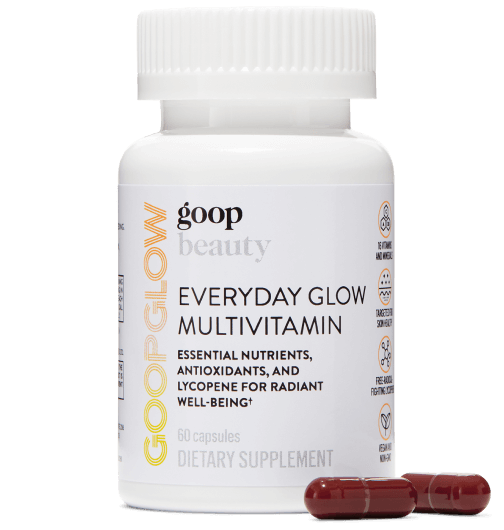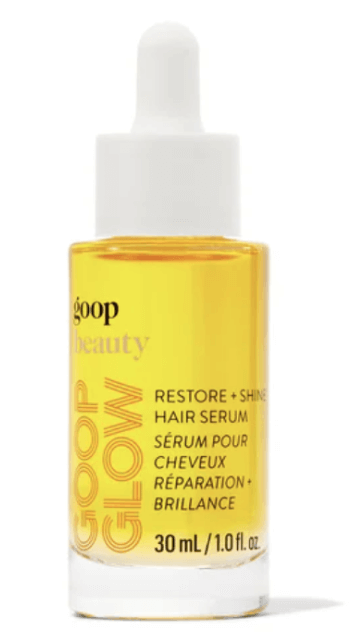[ad_1]

The Key Vitamins and Minerals
for Healthy Hair Growth
When we think of healthy hair, we don’t typically think of healthy hair follicles, but that’s where it starts.
On average, our scalps have about 100,000 hair follicles. Each follicle is made up of highly active, living cells that form a mini pouch that helps hold hair strands in place and, with blood vessels attached, create a nourishing environment for hair to grow.
Nutrients flow through the blood vessels and supply the hair follicle with the nutrition it needs to fuel growth. There are four distinct phases of the hair growth cycle:
-
Growth (anagen). As the name implies, hair strands grow during this phase—the most active phase of the cycle. New hair is formed during this time, and, as the hair follicle is nourished, hair growth can occur. During normal hair growth, about 90 percent of hair follicles are in this phase, which can last two to seven years.
-
Regression (catagen). After allowing lots of growth, the hair follicle goes through a transitional period where the base of the hair follicle begins to break down and detach from its nourishing blood vessels. This begins to weaken the connection between the hair strand and the hair follicle. One percent of hair follicles are in this stage at any given time, and it lasts about one to two weeks.
-
Rest (telogen). As time goes by, the base of the hair follicle that began breaking down in the regression phase becomes completely inactive, further weakening the connection between the hair strand and the hair follicle. At any point in the cycle, 9 percent of hair follicles are in this stage, which can last five to six weeks.
-
Shedding (exogen). Eventually, the hair strand completely detaches from the hair follicle and falls out.
Thousands of hair follicles simultaneously undergoing their own hair growth cycle demands lots of cellular activity and energy, which requires nutrients, especially B vitamins. Here are the key nutrients that support healthy hair:
-
B vitamins—thiamin, riboflavin, niacin, pantothenic acid, vitamin B6, biotin, folate, and vitamin B12—play key roles in cell health and activity. They support energy pathways by breaking down macronutrients to produce the energy needed for our cells to function well, like properly growing and dividing during the hair growth cycle.
-
Iron contributes to energy metabolism in hair follicle cells, too, and may be important for normal hair growth.
-
Like every other cell in the body, hair follicle cells need antioxidants to protect them from oxidative stress. Vitamins A, C, and E work together to protect these cells from the damaging effects of free radicals so they can function normally.
-
Zinc and selenium support the maintenance of normal hair by protecting the body against oxidative stress via the antioxidant enzyme superoxide dismutase (SOD).
And emerging research suggests that vitamin D may play a significant role in supporting healthy hair by regulating hair follicles throughout the hair growth cycle, especially during the growth phase.
The Multivitamin with a Beauty Benefit
We created our Everyday Glow Multivitamin to cover our daily nutritional bases and support glowing skin and healthy hair from the inside out. A foundation of 16 essential vitamins and minerals (including iron, vitamin D, vitamin A, and folate) supports healthy skin and hair, bones, immune function, energy metabolism, and nervous system and cellular health. High-potency antioxidant vitamins C and E—along with carotenoids lycopene and beta-carotene—promote healthy skin by protecting cells against damaging free radicals. Together with biotin, niacin, zinc, and selenium, these ingredients collectively support healthy hair, strong nails, and radiant skin at a cellular level.*
A Healthy-Hair Shower Routine
Whether you’re super into styling or you just air-dry and go, getting the basics right in the shower goes a long way toward keeping your hair in shiny, soft, bouncy shape.
Nourishing Recipes for Hair Health
Many nuts, seeds, legumes, fruits, and vegetables contain vitamins and minerals that can support cell activity, which makes a grain-free granola, black bean scramble, Bibb lettuce tuna salad, or lentil and chicken sausage stew great options for nutrients with flavor.

Grain-Free Granola
This warmly spiced granola works well with yogurt and berries, on an acai bowl, with almond milk, or just as is for a midafternoon snack.

Cauliflower Black Bean Scramble
An egg alternative that looks like the real thing thanks to a little dash of turmeric. It’s super savory, and the beans and avocado make it a filling breakfast.
Therapeutic Support
Sometimes healthy hair requires advanced techniques in addition to nutrients. If you’re looking for more support, platelet and stem cell injection therapies may be helpful. Here’s how the therapies generally work and have been shown to be effective.
Doctors like Robin Unger, MD, are using platelet-rich plasma—a small amount of plasma that contains higher levels of platelets than normally found in the blood—as therapy for hair loss. They withdraw the plasma from a patient’s own blood, concentrate it, and inject it directly into the skin of their scalp. Clinical results show a significant increase in hair density, thickness, and growth after three to six months.
Advancing research shows growing potential for stem cell therapy to help with hair growth. Doctors use stem cells from the fat or scalp of the patient. After the stem cells are properly prepared, they are injected directly into the scalp to regenerate hair growth. Hair restoration experts, like Craig Ziering, DO, specialize in this technique.
*These statements have not been evaluated by the Food and Drug Administration. This product is not intended to diagnose, treat, cure, or prevent any disease.
This article is for informational purposes only. It is not, nor is it intended to be, a substitute for professional medical advice, diagnosis, or treatment and should never be relied upon for specific medical advice. To the extent that this article features the advice of physicians or medical practitioners, the views expressed are the views of the cited expert and do not necessarily represent the views of goop.
[ad_2]
Source link







